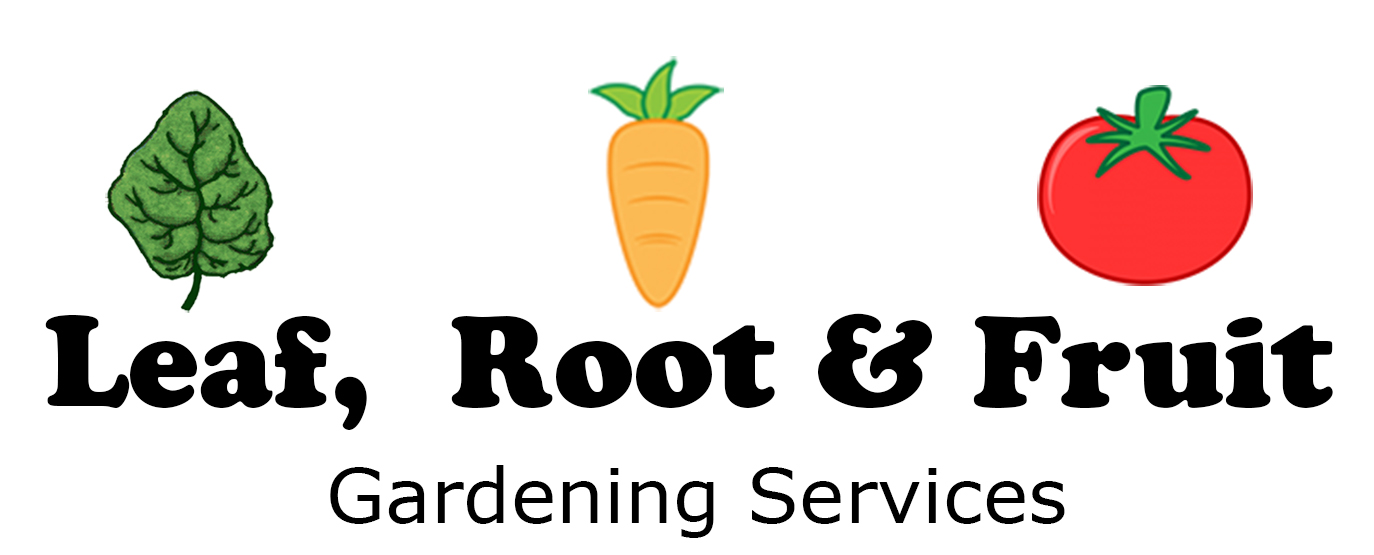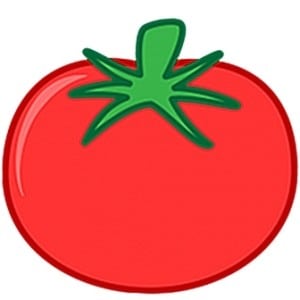Without correct advice, people new to edible gardening run the risk of failure and frustration. The most common reasons, are choosing the wrong plants to grow, or trying to grow them at the wrong time of the year. To help you choose which plants to grow, I have developed the Leaf, Root & Fruit Philosophy of Edible Gardening. It’s this philosophy that’s provided the name of the business, as well as the inspiration for the logo.
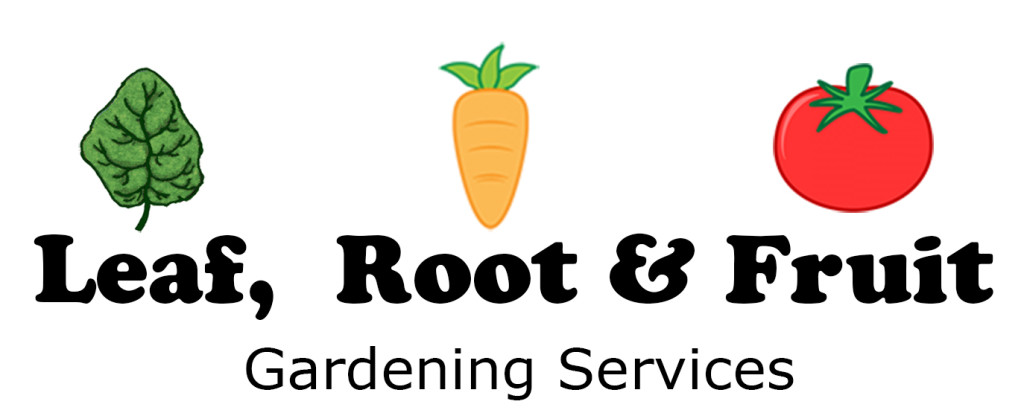
The Principle Behind My Edible Gardening Philosophy
The Leaf, Root & Fruit Philosophy of Edible Gardening is simple. Leaves are the easiest to grow, anyone can do it. Fruits are more of a commitment, they take a long time to come to fruition and have more complex growing requirements. Roots (plus bulbs and stems) are somewhere in the middle in terms of complexity and commitment.
Why? Think about the way a plant develops. First a seed germinates, puts down roots, sprouts leaves and grows bigger and bigger. Once the plant has reached full size, it flowers. If pollinated, the flower produces fruit. It takes time, sunlight, nutrients and water to grow plants to this stage. It takes even more time to condense nutrients and photosynthesized sugars into the fruit itself. Safely nurturing your plants through to fruiting stage and harvest, is a lot more difficult than sowing some leafy greens and picking them after only a few weeks. If you cannot provide optimum conditions for fruiting plants, then you will struggle grow a decent crop to justify the time, money, water and effort you spend on growing them. Too often I see people giving up on edible gardening in frustration, for this very reason. There are variations to the philosophy, such as radishes behaving more like leaf veggies and even strawberries with similar requirements to root crops. Beans, Peas and other legumes fall somewhere in between roots and fruits in terms of complexity and requirements.
I’ve tried to make it easy for you to remember the basics of the edible gardening philosophy by using a traffic light system within our logo.
The green spinach leaf represents the easy to grow leafy greens. The orange carrot represents the moderately complex roots. The red tomato represents fruits, which require the most commitment.
grow
Comparing Leaf, Root & Fruit Crops
Focus on Growing Leafy Greens
How often do you buy those pre-washed, chemical-laden, packaged “salads” of rocket, spinach or lettuce, only to have the bulk of the bag go mushy and fester in the bottom of the fridge? By concentrating on growing your own leaves, you’ll always have access to the freshest, chemical-free salad greens. These salad greens will all be ready for you to pick in the convenience of your own backyard, courtyard or balcony edible garden. That means less wasted food, less wasted money, less packaging and less transport related, environmental damage. In this scenario, everyone but the supermarket giant is a winner! Most importantly, the produce you grow yourself is also likely to taste far better than that sold in the supermarkets.
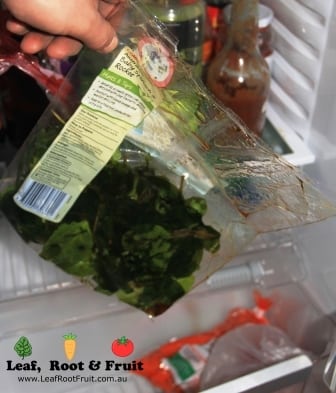
"If you grow it for the fruit or the root, you need full sun. If you grow it for the leaves, partial shade is all you need.
Gardening Saying Tweet
Edible Gardening in Containers
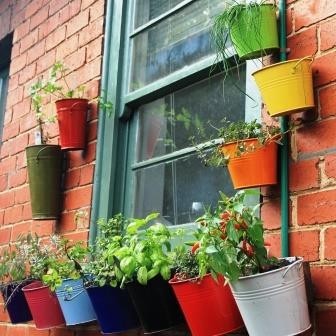
Here at Leaf, Root & Fruit we have enough experience to see that no two edible gardens are ever the same. Variations in location, soil type, rainfall, light availability, micro-climate and space mean that each garden has certain limitations. Edible gardens in containers and planter boxes are subject to all these variations. Factor in a small, finite space as another variable and the micro-climate you create needs extra attention. Whilst container-based edible gardens have the benefits of being able to be easily moved, and easily tended, it can also be difficult to maintain a steady supply of water and nutrients. When it comes to container gardening, some plants do better than others. Understanding the balance required to maximize your production from these micro-environments helps, even with very little knowledge of edible gardening, you can easily get started on growing your own food.
To make the most out of container and planter growing spaces, I recommend you devote much of it to cultivating leaves and herbs. You’ll enjoy them meal after meal in the quickest time frame and for very little effort. If you’ve got space left after planting your greens, then consider going for root crops like potatoes, carrots and beetroot. Still got space to spare? Then start planting fruits like tomatoes and capsicums.
Why not check out our blog post Top Ten Gardening Mistakes Made by Melbourne Based Gardeners and avoid making those ones as well.
Sign up to our newsletter for our monthly edible gardening wrap-up, including:
- A guide on what to plant in your garden in the upcoming month
- What’s happening in our garden and other gardens across Melbourne
- Upcoming gardening events
- Hints and tips on gardening
